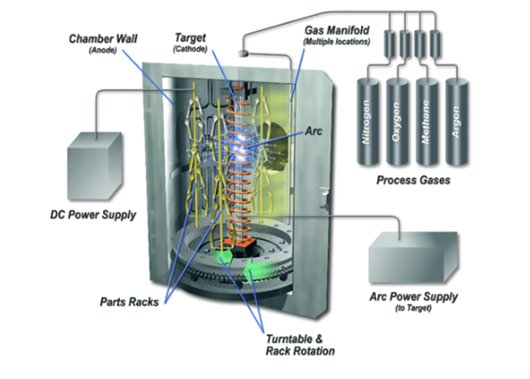Nine Methods Of Metal Surface Treatment Process
(2023年09月13日)https://www.richconn-cnc.com/nine-methods-of-metal-surface-treatment-process.html
Nine Methods Of Metal Surface Treatment Process
Metal surface treatment
In order to improve the appearance, texture, function and other properties of metal surface treatment products, it is usually necessary to treat the metal surface. The so-called surface treatment is to form a special surface layer on the surface of the material by physical or chemical methods.
Nine methods of metal surface treatment
1. Anodizing
Using the principle of electrochemistry, an aluminum oxide film is formed on the surface of aluminum and aluminum alloys. The main functions of this oxide film are protection, decoration, insulation, and wear resistance. In the process of anodizing, different processes are used for single color, gradient color and double color. The focus of improving the oxidation yield mainly considers the amount of oxidant, suitable temperature and current density.
2. Electrophoresis
The role of electrophoresis surface treatment is not only to maintain the luster of the metal surface, but also to enhance the surface properties and have high corrosion resistance. The method is to achieve various colors on the surface of the product for materials such as stainless steel and aluminum alloy. The electrophoresis process is relatively simple, mainly through the three steps of pretreatment-electrophoresis-drying.
3. Micro arc oxidation
The process of using the electrolyte solution to generate the ceramic surface film layer with high voltage electricity, the micro-arc oxidation process is affected by the high power consumption, so the cost is the highest, and the only two colors that can be realized are black and gray.
4. PVD vacuum plating
PVD surface treatment can realize metal surface coating with high hardness and high wear-resisting cermet decorative coating.
5. Plating
The products through electroplating can make the coating glossy and high-quality metal appearance. The electroplating process means that the metal surface is attached to the metal film by electrolysis to play a role in corrosion, which can improve wear resistance, electrical conductivity, reflectivity, aesthetics, etc. .
6. Powder Coating
Bulk powder coating is often used for the appearance of architectural furniture products and heat sinks. The powder coating process has five steps: parts - electrostatic dust removal - spraying - low temperature leveling - baking. Under the action of static electricity, it is adsorbed on the surface of the workpiece to form a powder coating, which is baked at high temperature to form different effects.
7. Brushed metal
The process of wire drawing is to make the metal surface produce a non-mirror metallic luster, which can also eliminate subtle defects. It is mainly a means of forming lines on the surface of the workpiece by grinding the product to achieve a decorative effect.
8. Polishing
In order to improve the dimensional accuracy and geometric progress of the workpiece, polishing can make the surface of the product smooth and mirror-like. The process is to modify the surface with flexible polishing tools and abrasive particles and other polishing media.
9. Etching
Exposure by plate making, after development, remove the protective film in the area at the desired time, contact the metal with a chemical solution during etching, and use two positive patterns to dissolve and corrode by chemical flooding from both sides, forming a concave-convex or hollow molding effect. There are two ways to realize the process: exposure method and screen printing method.
If you want to know more metal surface treatment types, please visit our website.
- このできごとのURL:



コメント